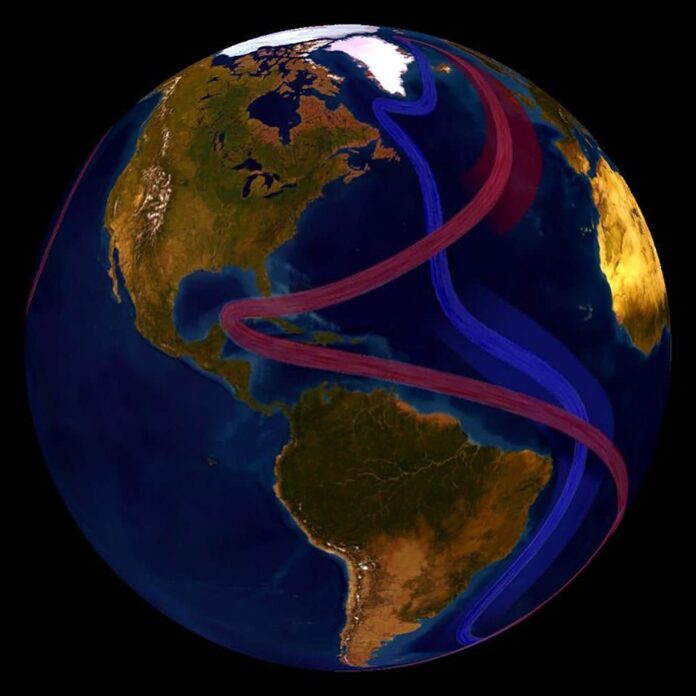Yesterday in Oakville, just west of Toronto, the daytime temperature reached 16 Celsius (61 Fahrenheit) degrees according to the outside thermostat in my car. That’s 15 Celsius warmer than the average at this time of year up here in the Great White North. The combination of a warm air mass and the returning Sun made it feel like spring was in the air.
The climatologists tell us that we have El Niño to thank or blame for the crazy weather we are experiencing. That plus global warming of the atmosphere from rising carbon dioxide (CO2) levels is also cited.
The weather is getting odder almost everywhere. In Atlantic Canada, Nova Scotia has seen record snowfalls in the last week. Scientists are studying changes in the Atlantic Meridional Current (AMOC) that is fuelled by the Gulf Stream and North Atlantic Drift noting that there are signs of a future collapse which would dramatically alter the weather of Western Europe and parts of Eastern North America. What is fuelling the change which has been described as a tipping point?
The melting of Greenland ice as well as that from other lands and islands in the North Atlantic and Arctic Ocean are leaving a noticeable temperature and salinity footprint. Freshwater melt that washes into the North Atlantic overlays the denser saltwater. AMOC’s northeastern flow from Florida to the coast of Europe is intercepted south of Greenland and Iceland. The result, Newfoundland and Labrador have seen increasing quantities of spectacular icebergs calving off Greenland’s glaciers. When the warmer water from the south hits the fresh meltwater and saltier, colder ocean off Greenland the latter sinks and gets conveyed south where ocean heating in the tropics causes it to rise and start the journey back northward.
Will AMOC Run Amok?
A study published this week in the journal, Science Advances, states that all the elements are in place for an amok AMOC with a collapse leading to significant global climate impacts. The earliest warning signs are showing up in the South Atlantic off the coast of South Africa.
The study mentioned above notes that “ocean, atmosphere, and sea-ice responses strongly influence the regional climates across the globe.” Changes to AMOC can cause climate-altering effects in Europe, North America and the Amazon rainforest. After a collapse both hemispheres would see changes, the North getting colder, the South getting warmer.
We see climate-altering effects from the ocean today. The reverse sea ice albedo effect occurs every winter in the Northern Hemisphere when the Arctic freezes. This causes dramatic temperature drops in North Atlantic coastal communities from Greenland to Norway, to Newfoundland and Labrador.
Historically we may have seen an AMOC hiccough in the 18th century with Europe’s Little Ice Age from 1750 through to 1850. The cause may have been a sudden increase in sea ice melt in the North Atlantic causing surface freshwater forcing.
Prehistoric records show evidence of an AMOC collapse at the end of the last Ice Age. When the ice advance peaked in North America 21,000 years ago and the melting began, it formed Lake Agassiz, larger than all of the Great Lakes combined. The outlet to this post-glacial lake that stretched from where Lake Winnipeg and Lake Ontario are today was the Mississippi River because a lobe of the melting ice blocked the northeasterly outlet following the St. Lawrence River valley. When that lobe disappeared the flow from Lake Agassiz reversed from south to northeast meeting the North Atlantic in the Gulf of St. Lawrence. This caused massive freshwater forcing and a complete disruption of the AMOC. As the lake emptied sea levels in the North Atlantic rose 1.5 metres (almost 5 feet) submerging coastlines and altering plant and animal habitats.
The Warning Signs Today and Consequences
Climatologists believe the AMOC tipping point will first show observable changes in the Atlantic Ocean, both north and south of the equator. The ocean off South Africa today is showing early warning signs with negative freshwater flows being observed affecting the ocean’s Global Conveyor Belt. These observed negative trends at around 34 Degrees South will in time increasingly impact ocean salinity. Between 25 and 50 years from now, this could lead to a loss of about 75% of the heat transport from the South Atlantic to the North which will affect the Gulf Stream and North Atlantic Drift. How near or far are we from this AMOC tipping point?
The AMOC collapse could be fast or slow taking as long as a century to play out. If fast, Europe would generally experience average temperature declines of between 5 and 10 Celsius (9 and 18 Fahrenheit) within a century. The collapse would reverse the wet and dry seasons in the Amazon, disrupt weather over the Sahara, and impact seasonal monsoons in the Indian Ocean.
If the collapse is slow, the observed changes will be more manageable. We may have time to intercede through a rapid reduction in greenhouse gas emissions from industrial sources. We may have more time to adapt.
A final note: Based on the latest climate modelling, current global climate change policies have the world on a path to heat up by 2.7 Celsius (4.9 Fahrenheit) by 2100.









